December Birthstone
Guide to Tanzanite, Zircon and Turquoise - December's Birthstones
- Home /
- Birthstones by Month /
- December Birthstone
What is The Birthstone of December?
With the holiday season glistening and shining with luminous twinkling lights, what could be more fitting for the three official December birthstones to be: Zircon, Tanzanite and Turquoise. Also often used for gifts you'll find the blue Topaz.
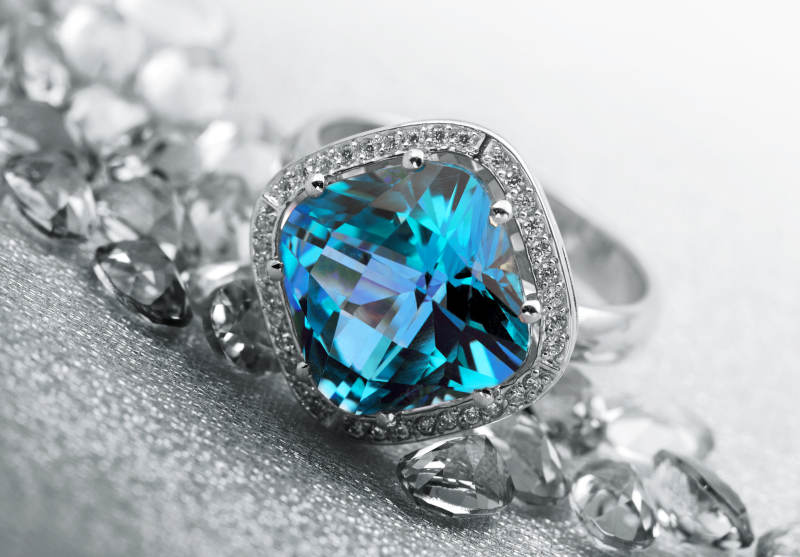 Blue Topaz and Diamonds Ring for December Birthstone Gift
Blue Topaz and Diamonds Ring for December Birthstone Gift
December Birthstone Color
These gems are known for their distinct icy blue hues that vary from light and airy to deep and mysterious. But whichever blue tone matches your mood best, a December birthstone would always make you look frosting…
Topaz Gift Ideas for December’s Birthdays
Above are just a few of the highest rated Topaz gemstone jewelry from Blue Nile's collection. For more options, check the link below.
The Story of Zircons
While it is true that zircon is available in a wide range of shades, the official hue for which it is associated with the wintery December is a sky light blue. The difference of colors occurs due to impurities and varying conditions during the stone’s process of creation. But be they orange, white, yellow or blue, the zircon is considered one of the most ancient stones out there. However, despite its status and antiquity, the zircon is a rather common stone found in the crust of the earth. Perhaps this is the reason that there is very little history about the gem. Plus, as it comes in different colors, it was naturally mistaken for other rare gems.
There are a few mentions of the stone in old texts; for instance, in an ancient Hindu poem about the tree of Kalpa, where the zircon is described as the leaves. Another example is a relatively minute notice of the stone in the Bible, where the stone appears as one of the many gems adorning Aaron’s breastplate. Oddly enough (considering the ancient sources where the stone is mentioned) the origin of the zircon name is from the Persian word zargun which translates to “gold-hued”. The English variation of the name in fact derives from the German word zirkon.
Whether of Hindu origin, Arabic or German, it seems that the zircon is as old as the earth itself. During the middle ages, people believed it possessed the power to bestow grace, charm and wisdom on its wearer. Furthermore, it was used to expel bad spirits and boost positivity. To this day, the zircon is believed to bring prosperity and assist its wearer reach their every goal and aspiration.
Myths and Legends
In the middle ages, the zircon was more than just a glowing jewel symbolizing opulence; it had two other uses. The first was for stimulating a good night’s sleep. In fact, there were potions and concoctions that were used with the zircon, that was assumed to be a powerful sleeping aid. The second use was as an amulet protecting travelers from the dangers of the plague. People believed that if the stone lost its brilliance, a plagues person or location was close by. In short, this lucky charm did more than decorate stunning jewelry.
The Story of Tanzanites
On the other edge of the blue color palette, with deep lush shades of navy-violet, is the radiant tanzanite. As implied by its name, this particular variety of zoisite mineral can be found only in Tanzania - making it rather rare. Though the stone had been found and introduced to the western market only less than a century ago, the precious gem is presumed to exist 585 millions years. It is thanks to the publicity, its truly unique color and its relative hardness, that this stone has become a prized collectable.
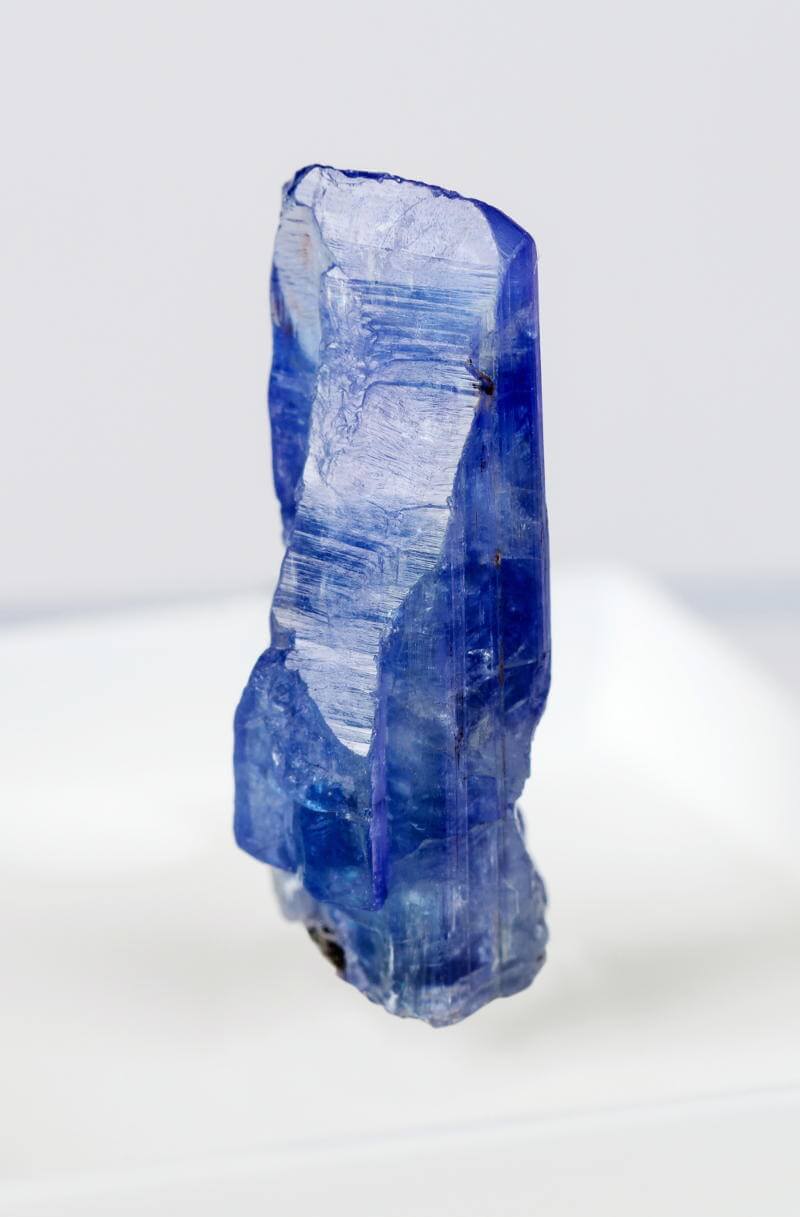
Tanzanite - December Birthstone
Despite the tanzanite being famous for its violet shades, in nature, the stone is more likely to be found in the shades of gold and brown. The blue variety is actually a form of the mineral that had suffered impurities during its creation. It was later discovered that the brown varieties could be changed to the blue shades, which had made the stone so successfully marketable. This was achieved by heating the stone and then cooling. Of course, due to this discovery, in addition to the fact that the tanzanite deposits have yet to be entirely mined, all blue tanzanites in the market are natural rather than lab-grown. It is all these facets that make the tanzanite a one-of-a-kind, a rare trophy for any collector.
Myths and Legends
Though the stone’s history is probably rich, there is little known about it, and therefore, very little mystical lore surrounding it. That being said, some people believe that the stone can reveal one’s true self, and thus, had transformative powers; turning the negative into positive. Furthermore, the color blue is sacred in Tanzania, especially for women going into labor. These women are given blue-beaded necklaces so that their newborn is welcomed with positivity - it is believed that the tanzanites have been used for this practice. Beauty, rarity and positive vibes… the more we learn of the stone the richer it becomes!
The Story of Turquoises
From the newly-discovered to the ancient and world-renowned gem that has fascinated many generations ever since the age of pharaohs; the turquoise. While researchers are still trying to dig out stories and information about the tanzanite, the turquoise has a rich history to tell, one that can hardly be summarized in a few paragraphs. The stone had been sacred to a great number of cultures and religions, mostly thanks to its mesmerizing color and the fact that it is the first stone to have ever been mined.
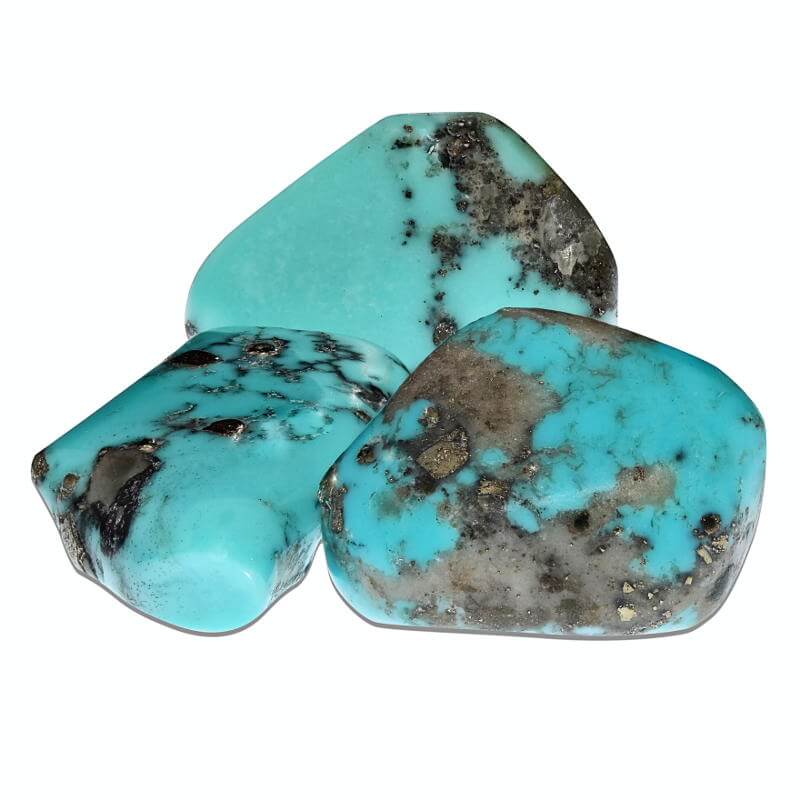
Turquoise - December Birthstone
There have been a great number of turquoises associated specifically with royalty of different origins and from varying centuries. For instance, ancient Egyptians are known to have buried their most esteemed and beloved pharaohs, such as King Tutankhamun, dripping in his turquoise royal jewels. The Aztecks are also famously known to have cherished the stone; their chiefs were recognizable by the blue turquoise beads they wore around their necks, which both symbolized their status as well as godliness, since the stone was associated with several of their gods. There are also numerous accounts from ancient Persia, China, Europe, Mexico and all the way to the Native American tribes of Navajo, Apachi and Zuni.
During 18th and 19th century excavations in Egypt, the extent of the admiration for the stone was discovered and so, its popularity increased. It was therefore, the French who had discovered it and given it its contemporary name, as well as popularization. Currently, the gem is mostly identified with the Native American culture, and can therefore be found in pieces of jewelry that resemble the culture’s style. Thanks to their captivating shades and history, the stone has remained attractive and desired by many, and thankfully enough, can be easily found.
Myths and Legends
The distinct color of the stone plays a great part in the legends surrounding it. Many tribes and sects thought the gem was produced and belonged to the skies, thus providing its wearer a heavenly protection. Others thought the gem was made of water and consequently the stone was related to different sea and nature gods. In China, the turquoise was believed to resemble an eye and offer protection from evil doers and spells. Be it heavenly, godly, fortunate or simply gorgeous, the turquoise will forever be a desirable jewel.

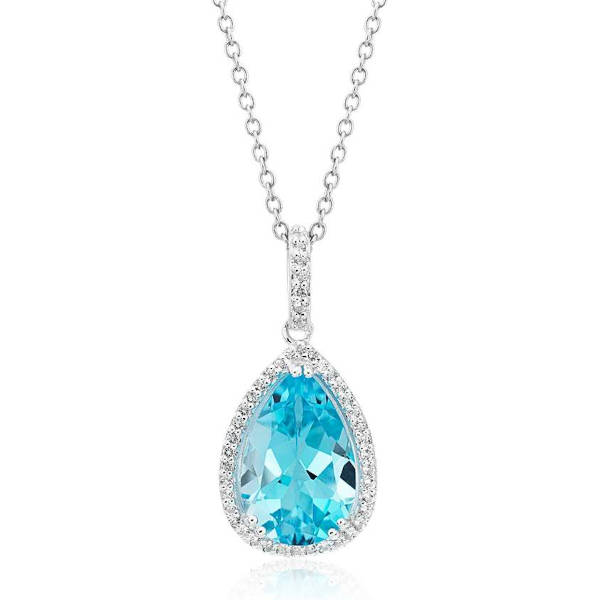 Sky Blue Topaz Elegant Halo Pendant
Sky Blue Topaz Elegant Halo Pendant
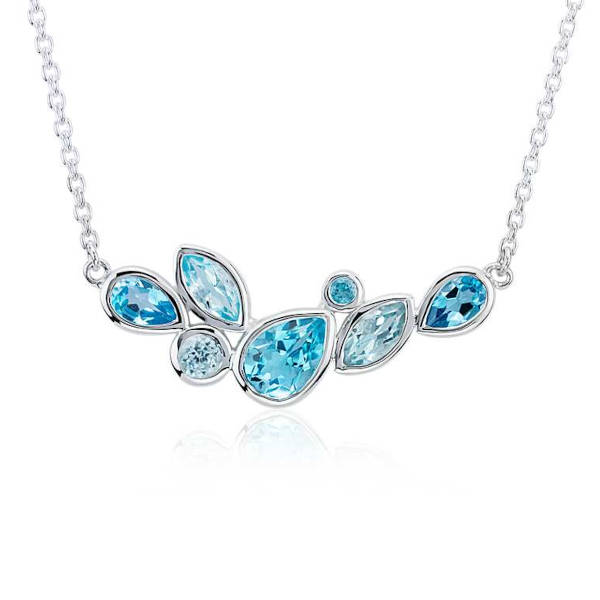 Mixed Shape Blue Topaz Necklace
Mixed Shape Blue Topaz Necklace
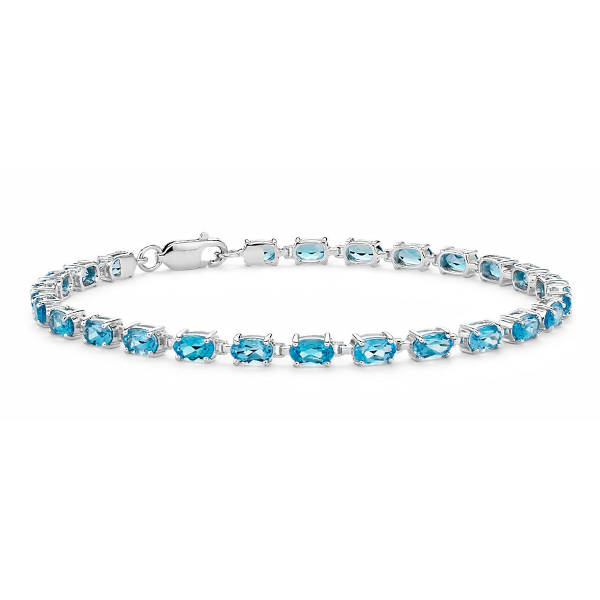 Petite Swiss Blue Topaz Oval Bracelet
Petite Swiss Blue Topaz Oval Bracelet
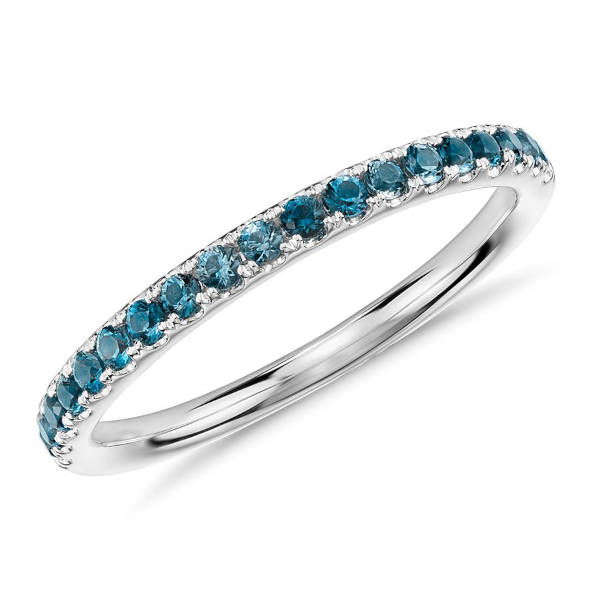 Riviera Pavé Blue Topaz Ring
Riviera Pavé Blue Topaz Ring